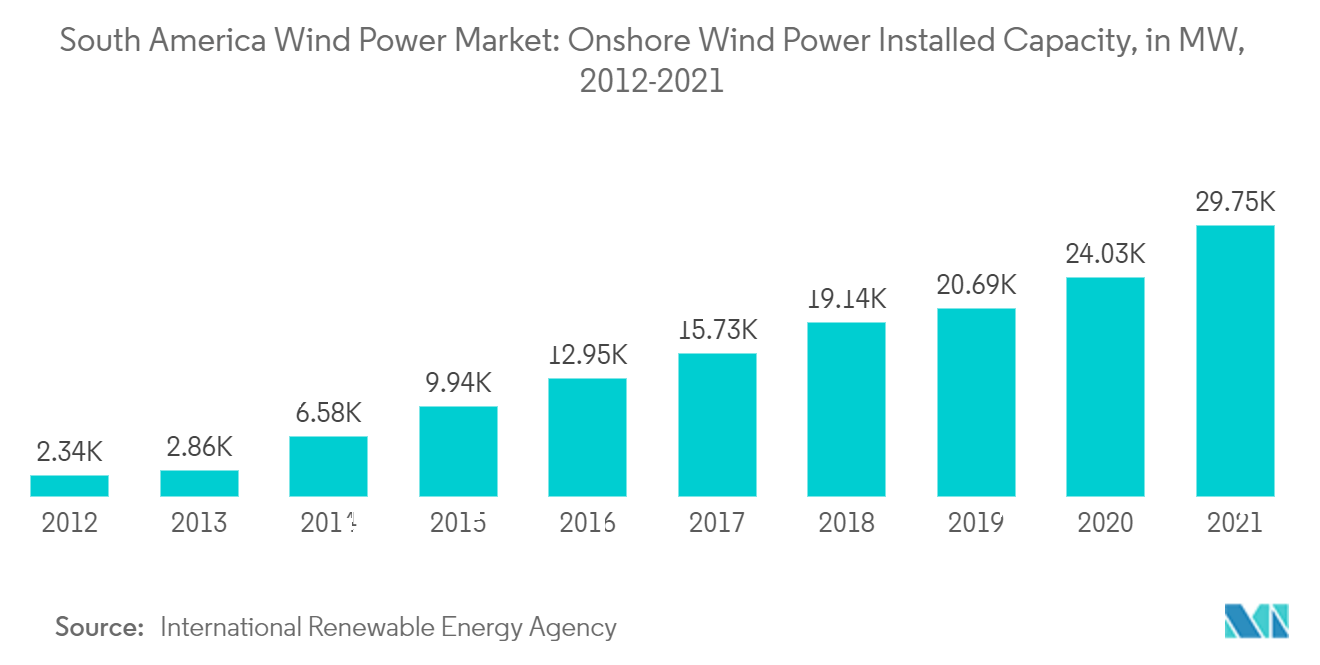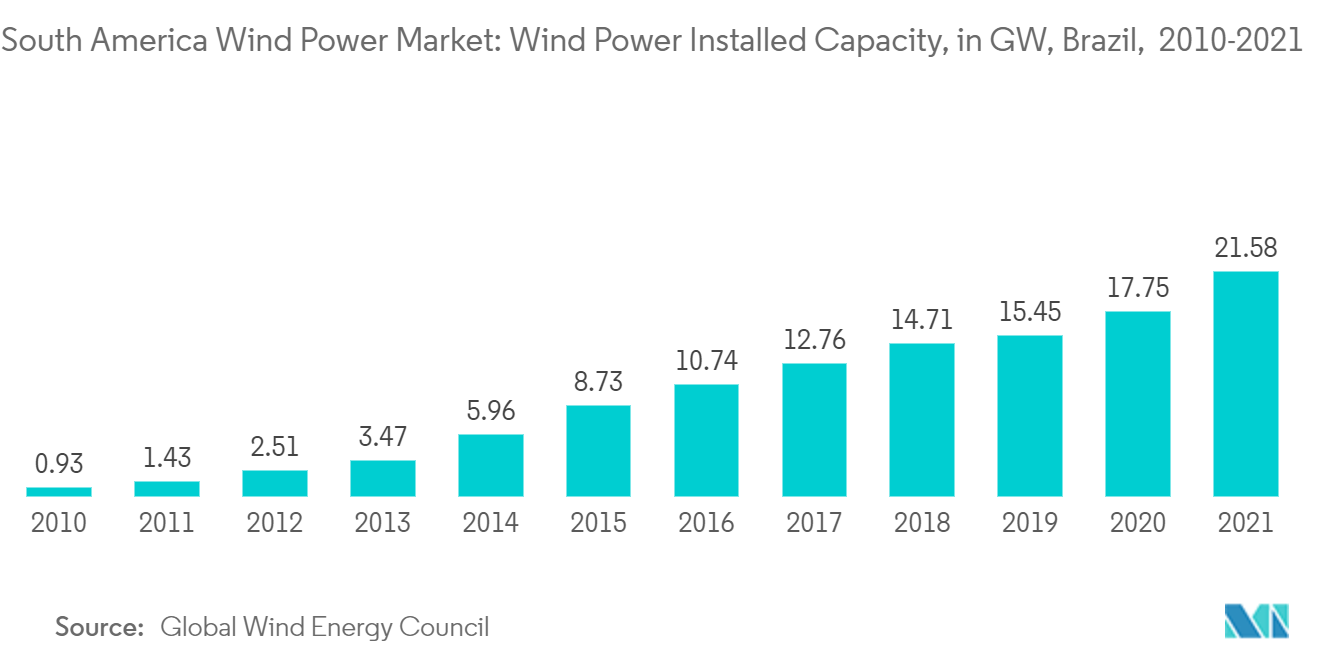Market Trends of South America Wind Power Industry
This section covers the major market trends shaping the South America Wind Power Market according to our research experts:
Onshore Segment to Dominate the Market
- Onshore wind energy power generation technology has evolved over the last five years to maximize electricity produced per megawatt capacity installed and to cover more sites with lower wind speeds. Besides this, in recent years, wind turbines have become more extensive with taller hub heights, broader diameters, and larger wind turbine blades.
- As of 2021, South America wind power consists of 100% onshore wind installations. The region had 29,754 MW of cumulative wind energy installations.
- The new Energy Transition Law of Colombia, enacted in July 2021, represents the government's commitment to achieving its climate change objectives and becoming a net-zero energy country. On the other hand, the Colombian government had approved the Generation Transmission Reference Expansion Plan for 2016-2030. In terms of generation, the plan stipulates that Colombia needs an additional 5,362 MW over the period above. It is planned to be distributed as follows - wind (1,456 MW), hydro (1,427 MW), coal (970), and smaller plants (793 MW).
- Chile is one of the first South American nations to declare a complete coal phase-out, announcing a plan to retire 1 GW of coal power by 2024. The country made regional low-carbon commitments with the Renewable Energy for Latin America and the Caribbean initiative, pledging a collective target of 70% renewable energy use by 2030.
- Chilean government's objective is that by 2050, about 70% of the energy consumed in the country will be from sources such as solar thermal, photovoltaic, or wind energy, adding to the announcement of the decarbonization plan. This is part of the country's ambitious decarbonization plan of completely phasing out coal plants by 2040 and achieving carbon neutrality by 2050.
- Additionally, in April 2021, Statkraft announced that the company plans to build its first wind farms in Chile with an installed capacity of more than 366 MW by the end of 2023. The wind power plants are expected to produce more than 300 GW of electricity annually, enough power to supply 10 million average Chilean households. The project is located in the O'Higgins region, 124 kilometers south of Santiago.
- Furthermore, decreasing the cost of power generation and growing investments, particularly in Brazil, Chile, Colombia, and Argentina, are expected to drive the onshore wind turbine installation, which, in turn, is expected to drive the wind power market in the region during the forecast period.

Brazil to Dominate the Market
- Wind power in Brazil has proved to be the most competitive technology, with an average price of BRL 98.62/MWh (around USD 30/MWh), well below the prices of large hydropower plants.
- The Association (Abeeólica) also stated that the country is expected to have nearly 18.8 GW of installed wind capacity by 2024, considering 186 new wind farms that are scheduled to come online by 2024. In addition to this, the government's 10-year energy development plan forecasts the country to reach 28.5 GW of wind capacity by 2026.
- Brazil has the highest capacity of wind energy installations in the region as of December 2021. The country had 21,580 MW of cumulative wind energy installations, out of which 3,830 MW of wind energy were installed in 2021.
- In January 2022, Statkraft announced that the company is ready to start construction of its Morro do Cruzeiro large-scale wind energy project in north-eastern Brazil after closing a turbine supply contract with German wind turbine manufacturer Nordex. The project entails two wind farms, 14 turbines, and a total installed capacity of 80 MW.
- Decree No. 10.946/2022 was issued by the Brazilian government on 25 January 2022, which specifies key provisions for allocating natural resources and physical space in open waters for energy production. The decree came into effect on 15thJune 2022. Under the decree, a framework for the assessment of the seabed is provided for the development of offshore wind projects, as well as the stages of planning and permitting are being defined to ensure that the implementation of this technology is facilitated in a timely fashion.
- A growing number of investors are focusing on Brazil, as indicated by the licensing requests submitted to the Brazilian Institute of the Environment and Renewable Natural Resources (IBAMA) for more than 80 GW of offshore wind projects. According to Brazil's Energy Research Office (EPE's) roadmap, Brazilian technical resource potential is approximately 700 GW. Further, EPE estimates that by 2050, Brazil will have 16 GW of installed offshore wind capacity, with a 20% reduction in CAPEX.
- As a result, the Brazilian wind power market is expected to witness robust growth during the forecast period, in the wake of the declining cost of wind energy and supportive government policies.


